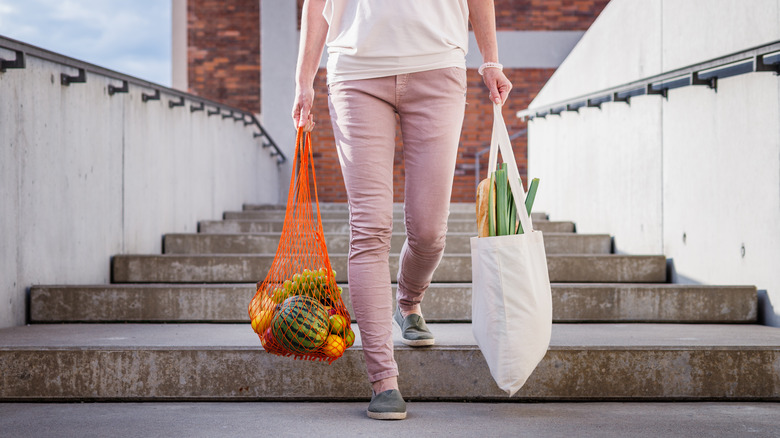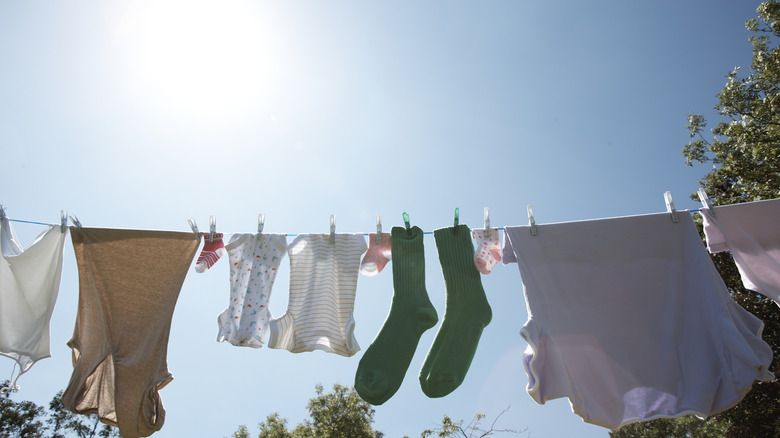The Food-Friendly Way To Cleanse Reusable Grocery Bags Between Trips
Consider that the world's oceans are estimated to contain 75 to 199 million tons of plastic waste. Along with large pieces of refuse, the ocean is also teeming with microplastics, which are small bits measuring less than 0.2 inches in diameter. In addition to being found in a variety of aquatic animals, microplastics are also present in the water people drink, as well as the seafood we eat. Accordingly, it's crucial that every person does their part to reduce how much plastic they use.
While the question "paper or plastic" was a standard part of the supermarket experience for many years, consumers these days are a lot savvier when it comes to environmental preservation. As a result, many shoppers prefer using reusable bags during grocery excursions in an effort to reduce how much plastic waste is generated. Along with their positive effect on the environment, reusable bags are also a lot more convenient, as they can hold more groceries than your standard plastic bag. However, they can get a little dingy over time and washing them might not be a good option. In this case, there's an effective, all-natural way to freshen up bags between shopping trips.
Clean shopping bags courtesy of a sunny day
Certain types of reusable shopping bags can be cleaned in your washing machine without issue. This includes bags made from canvas, which should be laundered after every use to ensure optimum cleanliness. Other types of bags, such as insulated ones, can't be washed without incurring some damage. In the same token, cleaning these bags with bleach or other harsh chemicals can imbue them with unwanted odors, which can then make their way into your groceries when they're kept in the bag.
Fortunately, there's an effective way to eliminate germs and foul odors from bags. Simply clean the bag thoroughly with a disinfecting wipe, then leave the bag to dry in the sun. You can also use this method for children's lunch bags, which run into similar issues with bacteria and odors. In addition to being highly convenient, as you can let the sun do the drying for you, this method is also very effective. That's because the sun is nature's highly effective disinfectant.
How sun exposure helps kill germs
If you're looking for some hard evidence that sunlight is a disinfectant, studies have been conducted showing its efficacy. One study, which appeared in the National Library of Medicine, probed the impact sun exposure would have on bottles containing virus-contaminated water. Researchers found that sun exposure was far more effective at inactivating viruses when compared to bottles that were heated but left in the dark. Another study, also appearing in the National Library of Medicine, evaluated the impact of sun exposure on laundry contaminated with tinea pedis, aka foot fungus. Contaminated socks were left in the sun for a period of three days, at which point they were tested for fungal cultures. When compared to socks that were left inside, the sun-exposed socks had a larger increase in negative fungal cultures.
So, how long should you leave reusable shopping bags and lunch bags in the sun to ensure the highest rate of disinfection? Consider the recommendations for line-drying laundry. It's important that the item is allowed enough time to dry completely to ensure the biggest benefit. In most cases, leaving items exposed for about one hour should do the trick.


